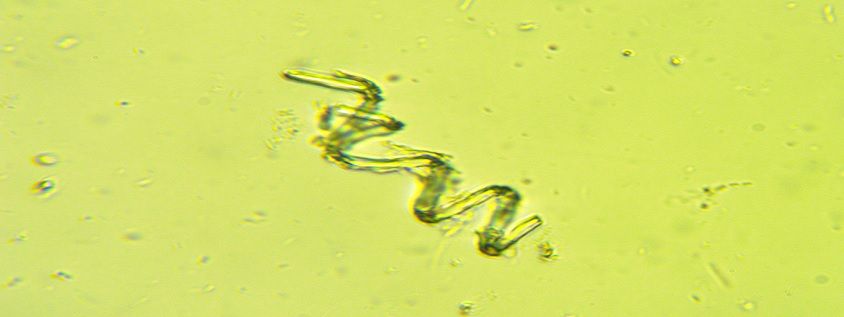This blog is part of a series on the soil food web and the role of each of its components in soil health. It focuses on soil bacteria and its importance in the soil food web. Bacteria are one of the most abundant and widely studied microorganisms in soil. Microbiologists estimate that one teaspoon of soil can contain up to as many as 1-100 million individual bacteria and a hectare can contain up to 10 billion. This means that there are as many soil bacteria in 1 ha as there are people in the world. Although small in size, their role in the ecosystem is crucial, such that without this domain of organisms, the entire human population and natural environment could not exist. For instance, a human body contains 10 times more bacterial cells than there are human cells. To put it into numbers, a fully grown human has about 100 trillion individual bacterial cells; this means that the bacteria in your body can be hosted in an area of about a 1000 ha.
Close up view of a spiral shaped bacteria
Ok, enough about human anatomy, back to the soil. Bacteria in the soil are not as mobile as fungi; they attach themselves to the plant root or live near the plant root. The component of soil carbon known as active carbon is the most nutritious and preferred by this group of microorganisms. The life cycle of a single bacterium in soil is short-lived, as bacteria mostly serve as a food source for other soil microbes such as protozoa and some nematodes. Its death in the soil through this process is however not in vain as it contributes to the mineralisation of nutrients in the soil. When bacteria are fed on by other organisms, its population is kept at a balance. If there are no organisms to control the population growth, then there is a high chance of nitrogen deficiency developing in that soil. This is because bacteria have a high requirement of nitrogen when decomposing organic matter. This high requirement competes with the plants requirement for nitrogen, resulting in a deficiency. Nitrogen fertiliser is usually applied near or in the root zone, where bacteria is most abundant, and it is expected that some of the nitrogen fertiliser will end up being consumed by soil bacteria. If bacterial growth is uncontrolled in soil, then the plants will suffer from nitrogen deficiency even though nitrogen is being applied thoroughly.
The soil will never run out of bacteria, what is of importance is to make sure that there are enough organisms to control their multiplication so as to benefit effectively from their presence.
- The management of soils with excessive sodium and magnesium levels - 2023-06-12
- Understanding evapotranspiration better - 2021-10-18
- Soil fungi connections - 2021-09-28

